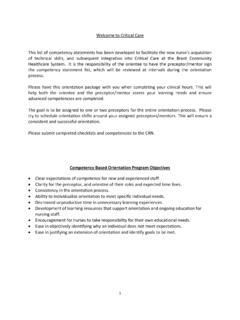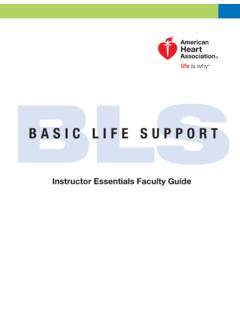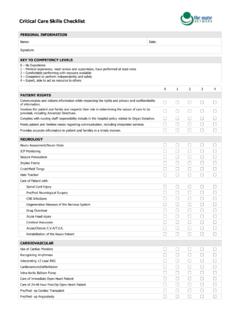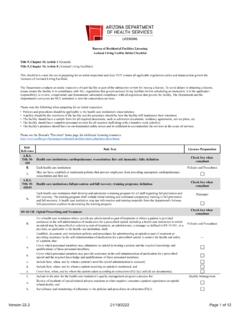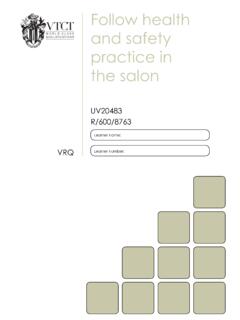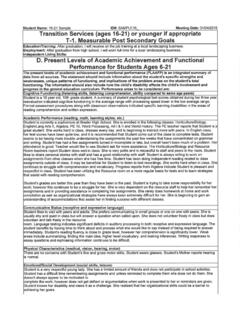Transcription of Emergency Preparedness - bkanesthesia.com
1 MEDICAL EMERGENCIES IN THE DENTAL OFFICE Barry Krall DDS Introduction The main emphasis in the management of medical emergencies in the dental office is preparation. It has been said that If you are prepared for the Emergency , the Emergency ceases to exist . How true that is! The atmosphere surrounding an Emergency situation can be stressful and emotionally charged. A well thought out Emergency plan, implemented in advance, can reduce the stress associated with the Emergency to manageable levels. The well prepared team almost seamlessly goes through the prepared algorithm attending to each step before moving on to the next phase of care. The question arises as to how often life-threatening emergencies occur in the typical dental office setting? McCarthy estimates that one or two treatment related deaths will occur over the practice lifetime of the typical dental practitioner1.
2 He further estimates that the number of office-related deaths would increase to five if dental patients were observed for seven days following treatment. The incidence of medical emergencies is unfortunately on the rise. There are many reasons for this increase. First of all patients are living longer due to advances in medical technology and therapeutics. For the same reasons, patients with more medically complex diseases are living longer and surviving decades after diagnosis. These patients diseases are often managed with a myriad of medications and increase the likelihood of drug interactions. Thirdly, dental treatment appointments are longer as a result of more complex treatment planning. This is of little concern in the healthy patient, but of much concern in sicker patients with limited physiologic reserve. Lastly, in order to help patients better tolerate longer, more complex appointments; the use of sedation in dentistry is becoming widespread.
3 Sedation is an excellent modality when used appropriately to alleviate treatment induced anxiety. However, deeper than intended levels of central nervous system depression, gone undetected, can lead to significant morbidity or mortality. ADA Guidelines for Preparation The ADA council on Scientific Affairs Statement and the ADA/PDR Guide to Dental Therapeutics gives the following guidelines to prepare the dentist for the inevitable emergency2, 3. Courses on Emergency medicine management are included in the curricula of all accredited dental schools The Council on Scientific Affairs recommends that all dental health care professionals receive regular training in BLS, because these skills are maintained only through repetition First and foremost in Emergency management is the ability to effectively provide BLS, when appropriate For the practicing dentist, the Council recommends that Emergency medicine programs be offered as CE (dental schools, dental societies etc) Didactic and hands-on training in the prevention, recognition and management of common emergencies also recommended A quick glance at these guidelines leaves the impression that preparation for emergencies is a continuous process.
4 It is fortunate that emergencies do not happen very often. However, it is difficult to become proficient at something when only encountering these situations infrequently. Therefore, as these guidelines suggest, repetitive practice with simulation is the best way to develop and train the instinct to respond when the moment arises. In the following sections, we will address how to prepare the general dental office, as well as offices that provide sedation/general anesthesia, for medical emergencies. The keys for success are proper planning, prevention of avoidable emergencies and a simple approach to managing the inevitable Emergency situation. Emergency Preparedness Emergency Preparedness involves 3 basic steps: Preparation Prevention Management In the following sections, we will look at each of these points individually in the quest for Emergency Preparedness . 1.
5 McCarthy EM: Sudden unexpected death in the dental office, J AM Dent Assoc 83: 1091, 1971. 2. The ADA council on Scientific Affairs Statement; JADA, Vol. 133, March 2002 3. ADA/PDR Guide to Dental Therapeutics. Fourth Edition A. Preparation Table 1 It is readily apparent by looking at the ADA council on Scientific Affairs Statement and the ADA/PDR Guide to Dental Therapeutics recommendations in the introductory paragraph that preparation for medical emergencies in the dental office is a life-long endeavor. Table 1 represents guidelines that can be followed to prepare an office for medical emergencies. Each dental office is unique and will require different levels of Preparedness based on patient type ( , pediatrics, medically compromised patients), nature of treatment (complexity/duration) and whether sedation or general anesthesia is administered in the office.
6 Discussion: 1. BLS certification for all office personnel (ACLS/PALS if required by law or practice model) It is essential that all office personnel are trained to recognize and manage medical emergencies. In the event of a life-threatening Emergency , there are many tasks that must be performed and time is of the essence. Therefore, each team member must be well trained in the algorithms of basic life support (BLS) and be prepared to effectively implement these steps effectively. 2. Didactic and clinical courses in Emergency medicine Fortunately, the incidences of life-threatening medical emergencies in the dental office are rare. Unfortunately, this is a double- edged sword. These highly critical, low-frequency events typically are managed poorly unless time and resources are committed to rehearsing protocols and keeping up with the latest developments in basic Emergency medicine.
7 Ideally, courses that provide opportunities to engage in hands-on practice provide the best learning environment. It is one thing to have memorized algorithms on management of medical emergencies and another to actually implement the steps in an organized and effective manner. Preparation (Modified from: Rosenberg. Preparing for Medical Emergencies: the essential drugs and equipment for the dental office. JADA 2010;141;14s-19s 1. BLS certification for all office personnel (ACLS/PALS if required by law or practice model) 2. Didactic and clinical courses in Emergency medicine 3. Well-defined roles defined for at least 3 team members (4 is better) 4. Emergency crash cart immediately available 5. Emergency oxygen cylinder pressure and supplies checked daily 6. Emergency phone numbers for Emergency medical services posted near every phone 7.)
8 Periodic Emergency drills are scheduled to simulate life-threatening emergencies 3. Well-defined roles defined for at least 3 team members (4 is better) Box 1 In the event of a life-threatening medical Emergency , it is readily apparent that this is no time for organization and development of protocols. These protocols should already be in place and well rehearsed. Illustrated in Box 1 is a job description for each team member in a life-threatening medical Emergency Team member #1 (dentist, hygienist etc) Assume leadership role a. The importance of having someone in charge of the Emergency is critical as timely decisions and interventions need to be made. This individual must stay with the patient throughout the Emergency and create a safe environment for all. b. They must be open for suggestions from all team members and after considering all information, make decisions regarding definitive care Implements ABC s of BLS Ensures all elements (ABC s) of basic life support have been considered and if necessary implemented effectively Uses closed loop communication Avoids thin air commands.
9 Examples of thin air commands might include; someone get the oxygen! Instructions will be given to a specific person by name and the instruction would be repeated back so the leader knows that the instruction is understood correctly. Team member #2 Retrieves oxygen Opens cylinder valve, attaches appropriate oxygen mask/cannula Monitors vitals It is imperative that blood pressure and heart rate be evaluated and recorded in a time-based fashion. This information, along with baseline values, provides invaluable information for determination of interventions and decision to transport the patient to the Emergency room Documents medications administered Assists with ABC s as directed Responsible for checking oxygen system daily a. Pressure gauges on the Emergency oxygen system should be checked daily to ensure that adequate volume of oxygen is available in the event of an Emergency .
10 The oxygen cylinder should be replaced if the pressure gauge reads less than 1000 psi. An E cylinder reading 1000 psi will provide 30 minutes of oxygen delivery at 10 L/min flows. b. Stock appropriate masks, nasal cannula and airway adjuncts (if practice appropriate) Team Member Role Description Team member #1 Assume leadership role Implements ABC s of BLS Uses closed loop communication Team member #2 Retrieves oxygen Monitors vitals/charts medications Assists with ABC s as directed Responsible for checking oxygen system daily Team member #3 Retrieves crash cart Turns on AED and follows prompts Assists with ABC s as directed Responsible for maintaining crash cart Responsible for checking AED (daily) Team member #4 Activates 911 Assists with ABC s as directed Meets EMS personnel at entrance and directs them to Emergency Adapted from: Haas D.
